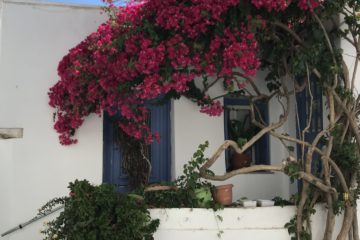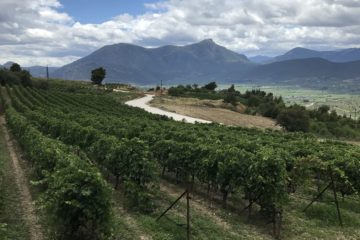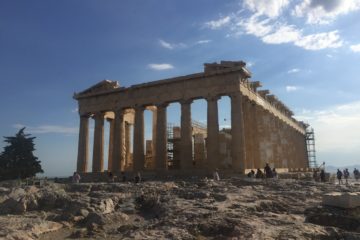After picking up our rental car from Athens (a brand-new car, but still a manual transmission, which once again meant that Rorie would be taking on all of the driving in Greece), we set off north toward Meteora, a fantastic-looking natural area with monasteries perched on the top of sheer cliffs in the mountains. Compared to Jordan, the driving was easy – Greece has fantastic road infrastructure and no random speed bumps in the middle of the freeways – but we were not prepared for how expensive it is to drive here at all. The rental car itself was cheap, but between the frequent pricey tolls and the insane gas prices, we realized our road trip was going to cost more than anticipated. No matter, though – it’s still the best way for us to get to and see all the amazing sights we have planned, so off we went! [Editor’s note: You should’ve seen the look on our faces after we saw the price of filling up our tank of gas, had a few toll charges under our belt and realized that this was merely the start of our sizable amount of driving in Greece. It was the visual representation of “oh no, we’ve made a terrible mistake!” Despite the tears (and Euros) shed by our wallets, it’s totally worth it as the best way for us to hit all of our destinations in Greece. But still…]
Meteora is a region of tall, sheer columns of rock rising out of the surrounding lush green mountains. These karst mountains are a little bit similar to the incredible Avatar-inspiring karsts of Zhangjiajie, China or the karsts in Halong Bay, Vietnam, but there aren’t as many and they’re not quite as dramatic. These mountains, however, have something unique – ancient monasteries built straight on top of them, right on the edge of the cliff faces! [Editor’s note: It’s been cool to see so many permutations of these types of natural formations, ranging from when they’re unadorned (Zhangjiajie), functioning as islands in a massive lake (Halong Bay) or with monastaries perched on top (Meteora). Realizations like this are a unique payoff of traveling so extensively on a trip like ours.] There are six monasteries still active and operating, though there were at one point over 20. Now, there are roads that go almost all the way to the monasteries so that tourists can visit, but most of them still require quite a few steep stone stairs to get to the door. We arrived in the nearby town of Kalampaka in the evening, had a nice dinner at a cute taverna in the town square, and headed to bed so we could get an early start the next morning to the monasteries.
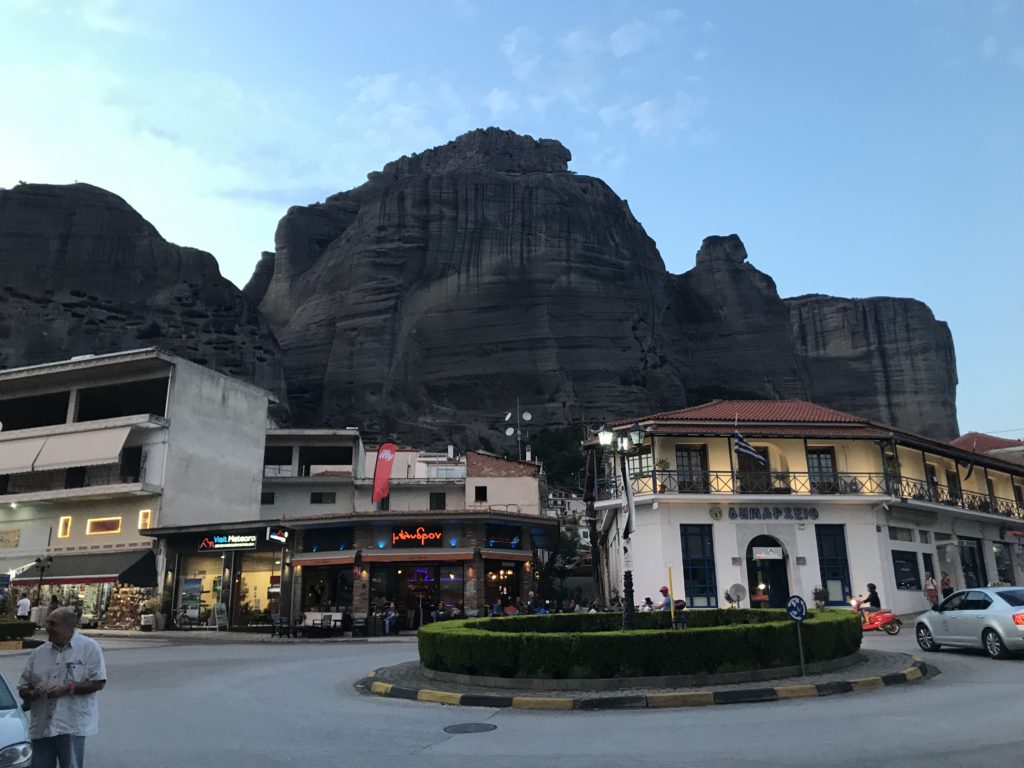
The imposing mountains above the main street in the cute little town of Kalampaka
In the morning, we plotted a course to try to avoid the tour buses, hopping between several of the monasteries. There is a small entrance fee for each, and each one has slightly different things to see – small museums of old preserved religious icons and manuscripts, a replica of an old kitchen, and even a room entirely full of skulls (presumably from past occupants of the monastery – not creepy at all!). These monasteries have existed since the mid-1300’s (and are still in use) and there’s a lot of history in each one. As an interesting aside, the dress code for the monasteries was so strict that women had to wear long skirts or dresses (pants were unacceptable), which makes these monasteries the most restrictive dress code of anywhere we’ve visited so far in the world.
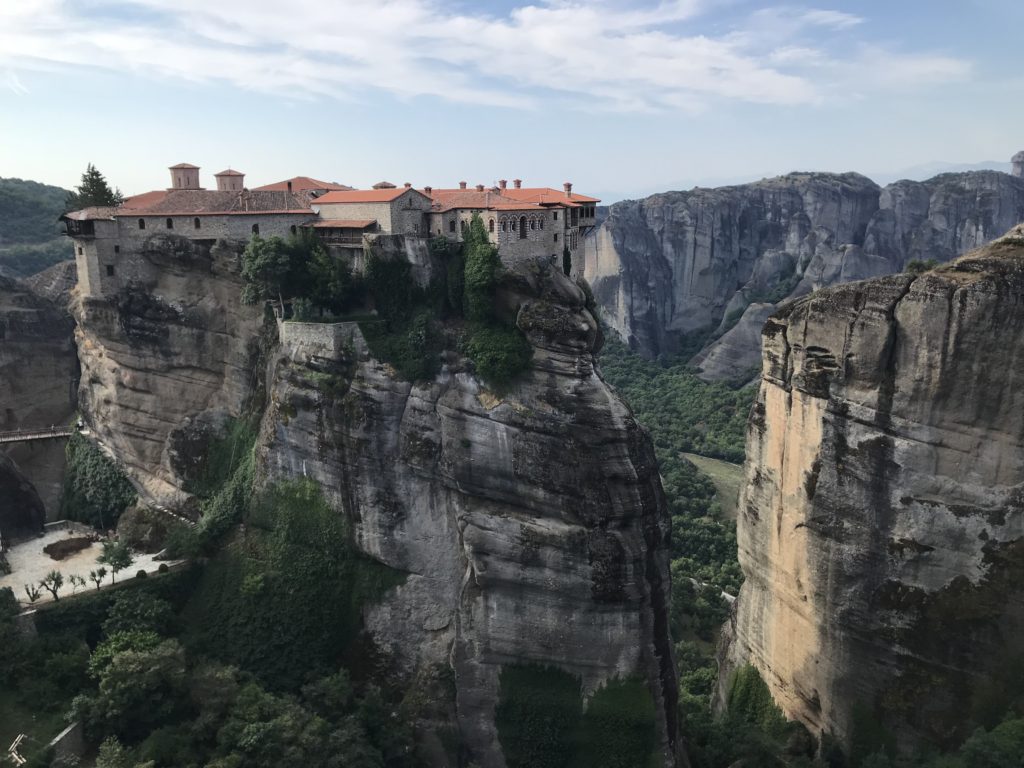
One of the monasteries on a cliff, and just one of the amazing views as we drove to visit them!
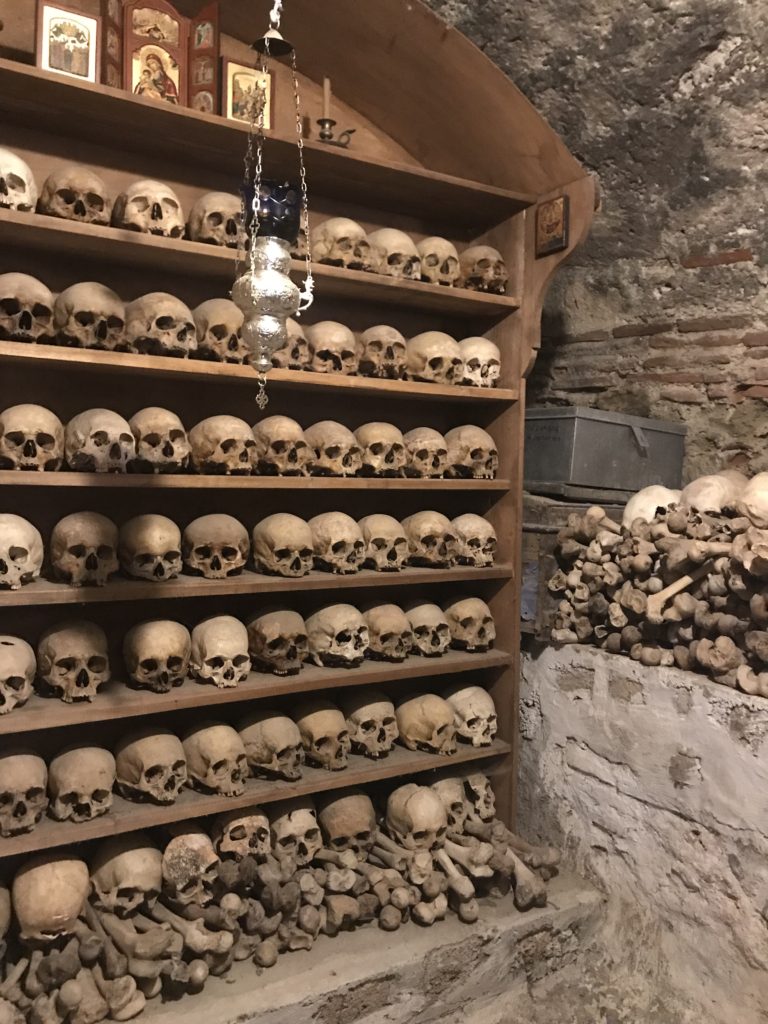
The totally normal room full of (presumably) past occupants at the monastery
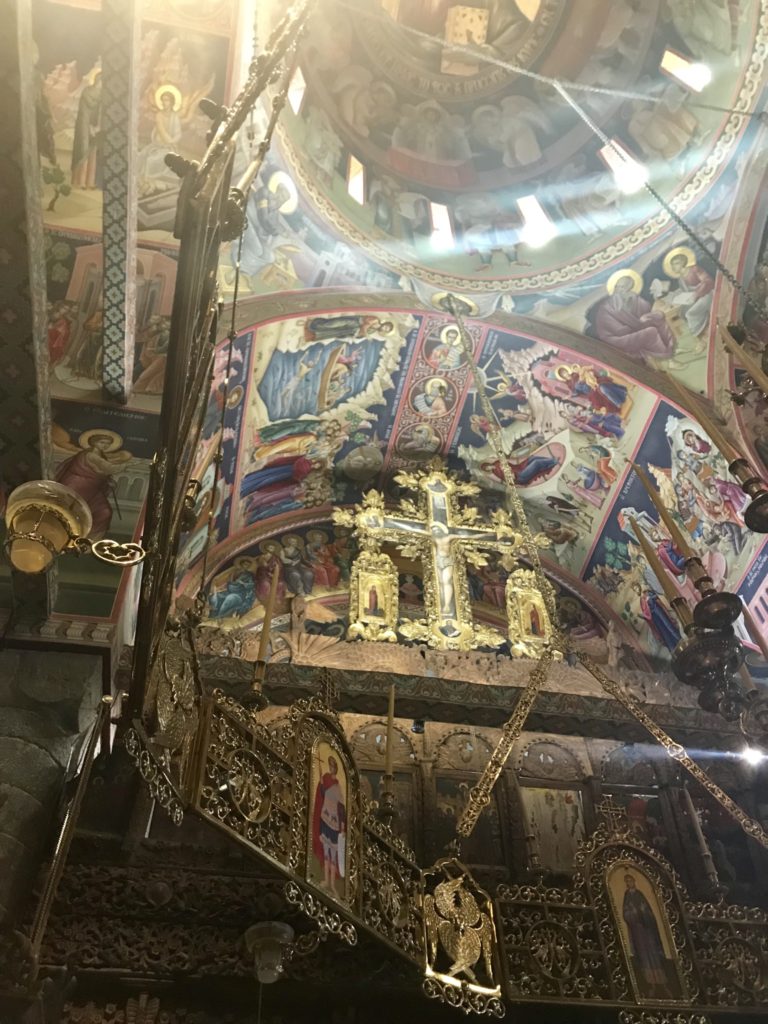
Looking up in one of the few churches where photographs were allowed. The paintings cover every square inch!
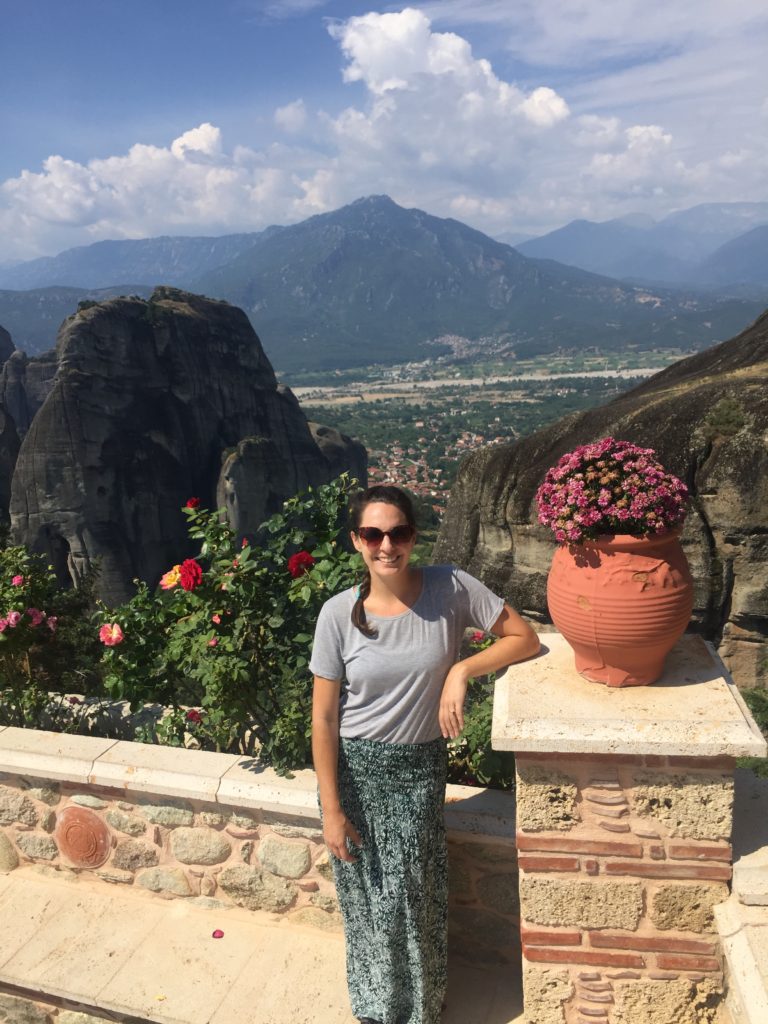
A pretty great view from one of the monastery terraces
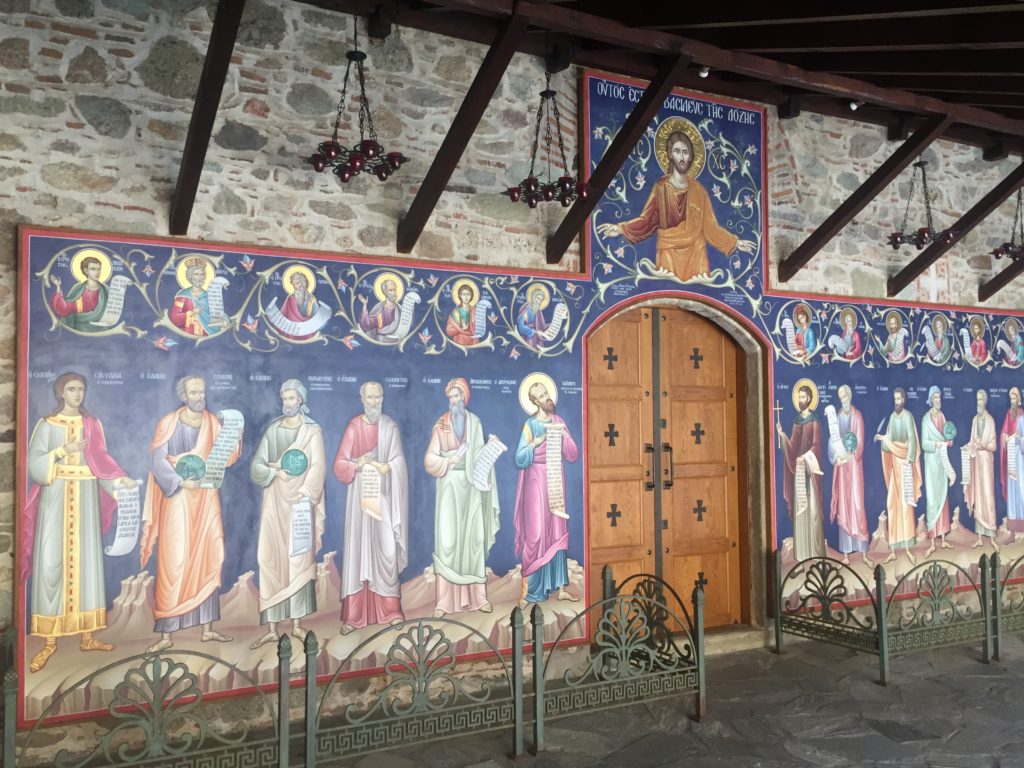
They do not mess around with their murals
While these museums and rooms were cool to see, the real beauty of the day was in the scenery and the vistas around every curve of the road and from every lookout point, looking across the green valleys to the next monastery perched on the very edge of the column of stone. It’s a truly unbelievable view, and one of the most incredible vistas I think we’ve seen in all our travels! I absolutely loved the scenery and we made sure to stop at several viewpoints in between visits to take lots of pictures and climb out onto the rocky cliffs for better views. [Editor’s note: Agreed about the views. With that said, one of the monastaries also had a very well-compiled museum about the history of the monastery, along with pictures and old footage of how the monks lived there ~60 years ago. Super interesting stuff!]
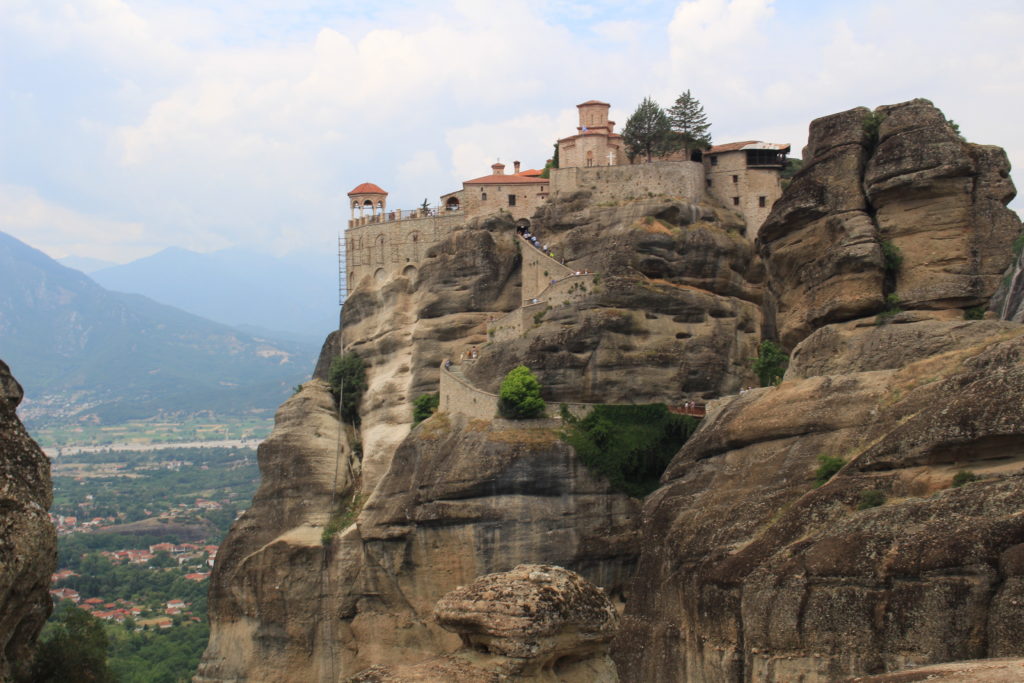
You can see the people zig-zagging up the stairs to reach this one
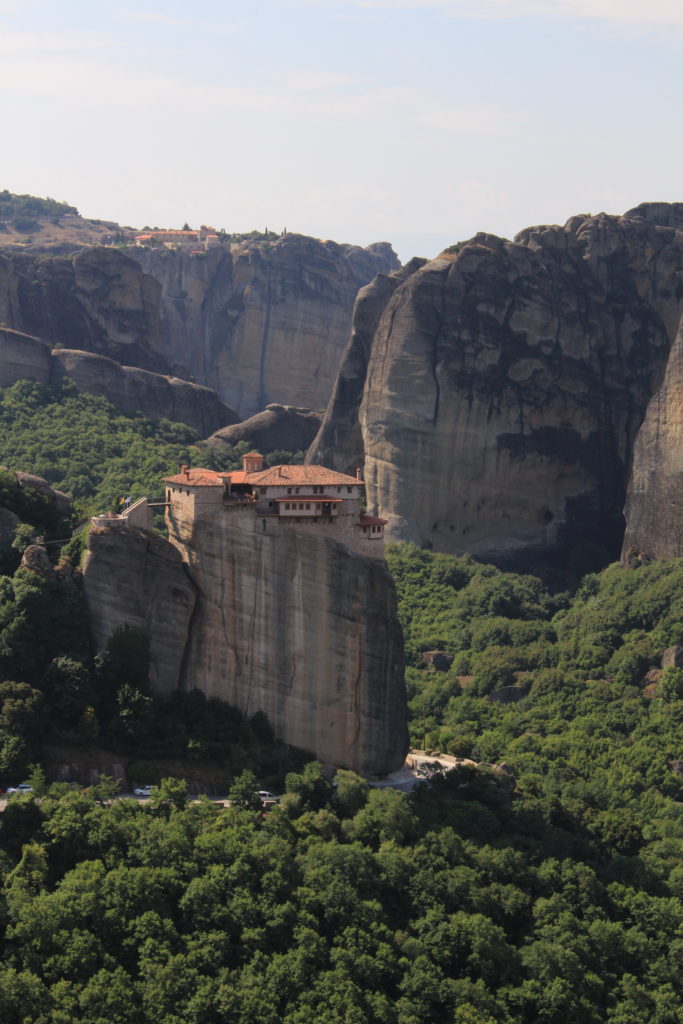
A smaller monastery perched on a column of stone.
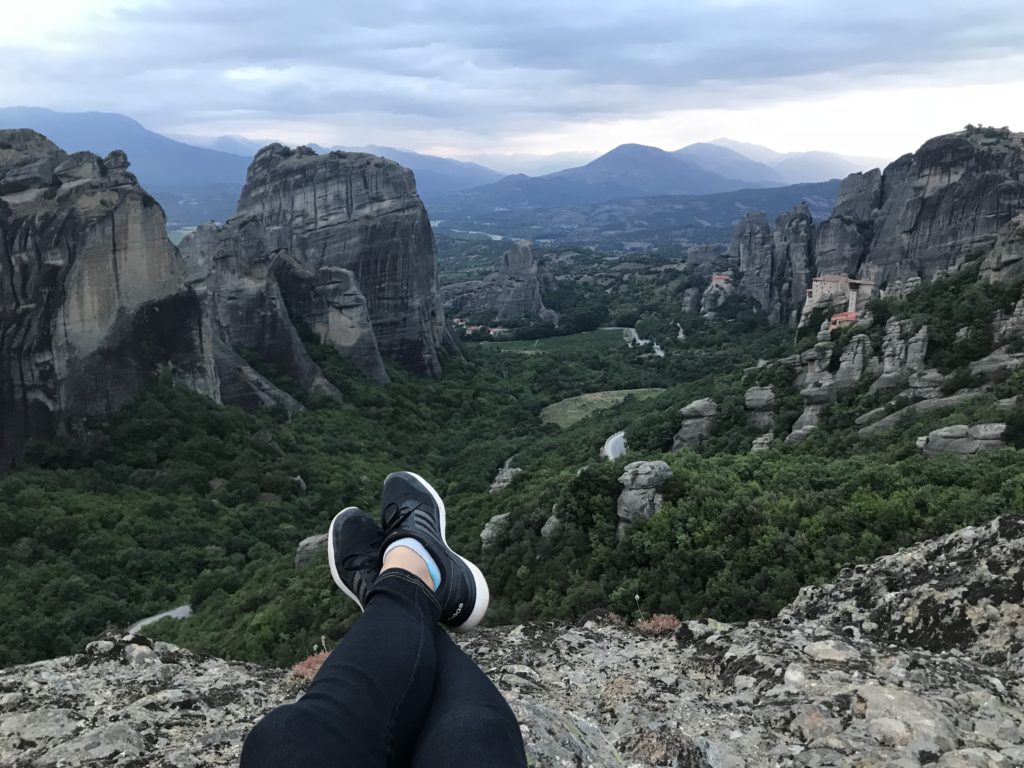
Sunset-watching spot
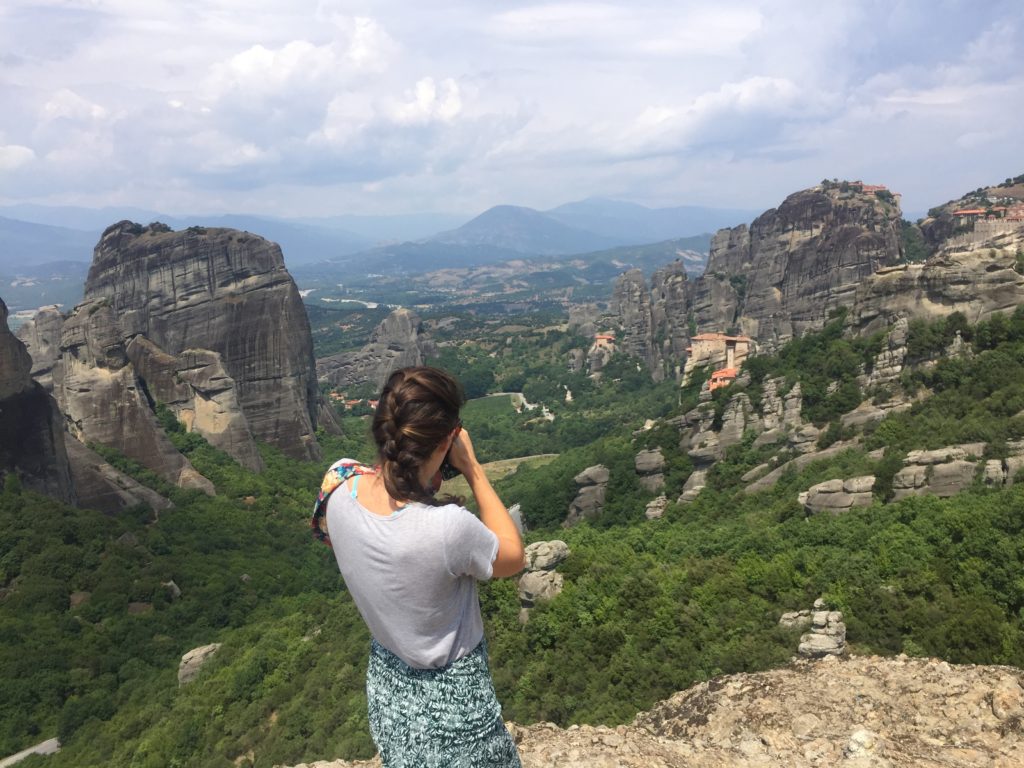
It’s honestly pretty hard to take a bad picture here.
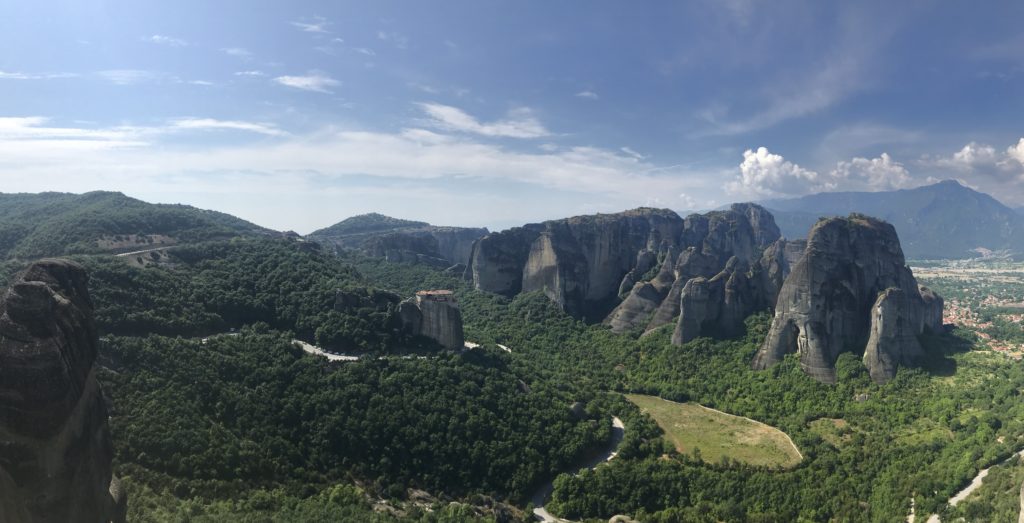
A panoramic view of the area with one monastery in the center
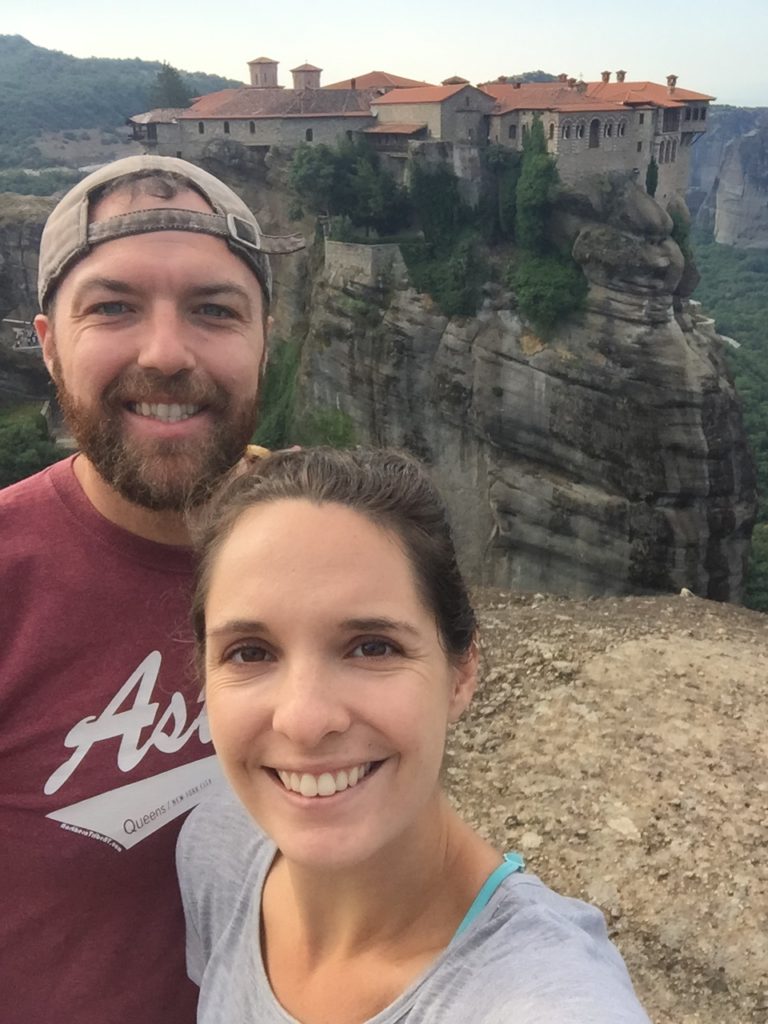
Cliffside-monastery-selfie!
The next day we said goodbye to Meteora and headed toward our next guesthouse, making a few stops along the way so I could take some pictures in a wet, chilly field of sunflowers and stopping at Thermopylae, the site of the famous battle between King Leonidas’ Spartans and the Persians that was portrayed in the movie 300. After a quick visit to a small museum with a short video and interactive exhibits about the battle, and a stop at the plaque on the top of a small hill where the Spartans made their last stand, we continued to the town of Arachova for the night. [Editor’s note: The battle was extremely significant, but there’s not really anything to see at the actual site of Thermopylae. Part of this is because the pass was famously narrow due to the mountain on one side and the ocean on the other, but in the 2000+ years since the battle occurred the ocean has moved 4 kilometers away from the site. This means that without artist renderings and video reenactments, it’s hard now to visualize what it was like.]
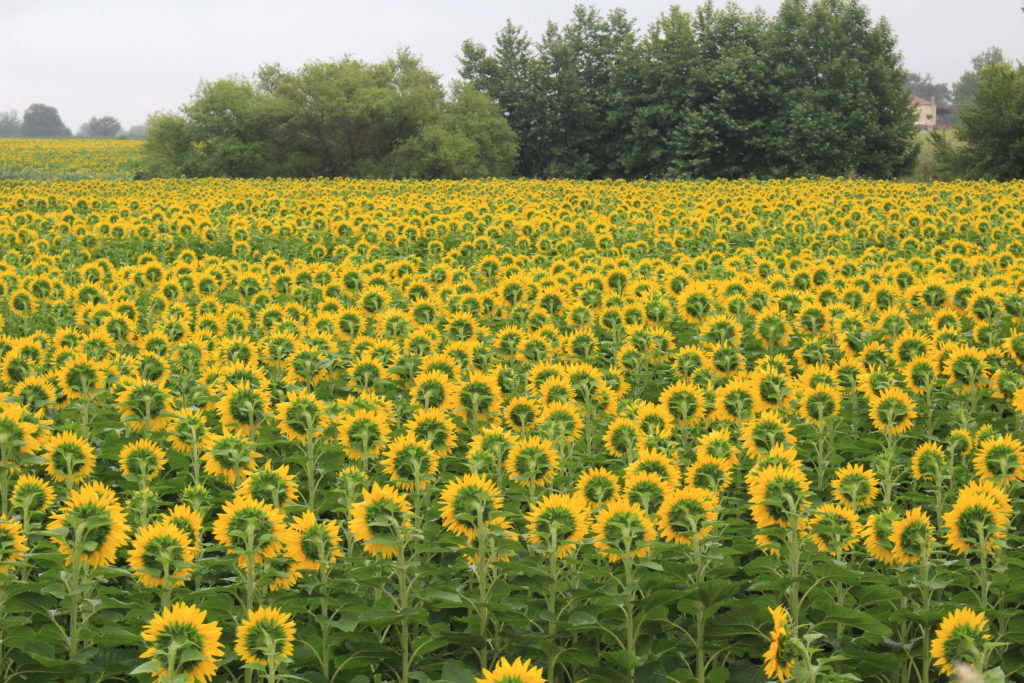
The sun apparently is supposed to be somewhere over there
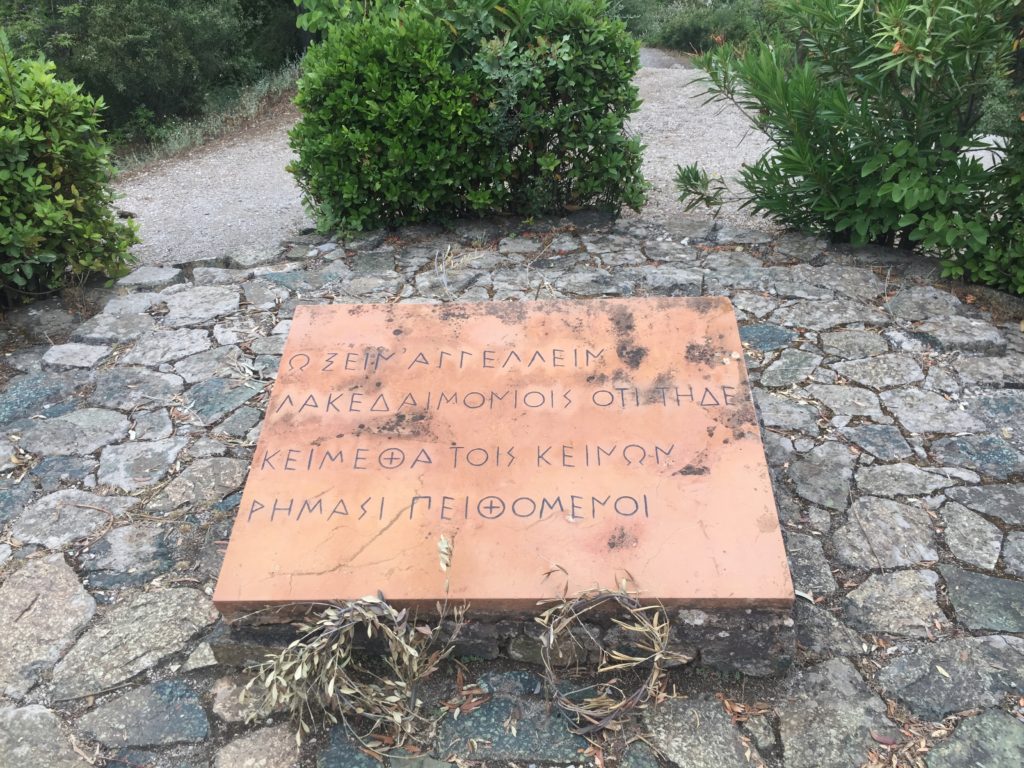
The plaque where the Spartan 300 made their last stand at Thermopylae
Arachova is an adorable small town that we stopped through for the night before tackling Delphi the following day, since Rorie had read that it’s a much cuter and more authentic place to stay than the town of Delphi itself. We were quickly faced with the authenticity for ourselves when we nearly got our tiny car stuck on the narrow, winding cobblestone streets trying to park, screeching our tires and smelling the burning rubber while I tried desperately not to annoy Rorie too much with my quiet whimpering while holding on for dear life as we lurched up and down the steep sharp corners. [Editor’s note: We could copy and paste this characterization of our roles in every blog post that involves me operating a motorized vehicle (scooter, car, whatever) with Jess as a passenger. Sometimes it’s because of my driving style (e.g., all Jordanian driving), but mostly it’s due to the circumstances of the driving (e.g., tiny Arachova roads or ridiculous Southeast Asian scooters). She used to actively shriek at every sign of peril, but now just tries to suppress it and whimpers the whole time. This is our dynamic, y’know?] But he’s a champion and did it without any (visible) damage to the car! After realizing that Google Maps was wrong about the location of our guesthouse and wandering around for a little while, we eventually found our wood-paneled, lodge-like room. Arachova is a popular ski town in the winter, so it has a very “Park City, Utah in the summer” vibe and was very cute but relatively deserted while we were there.
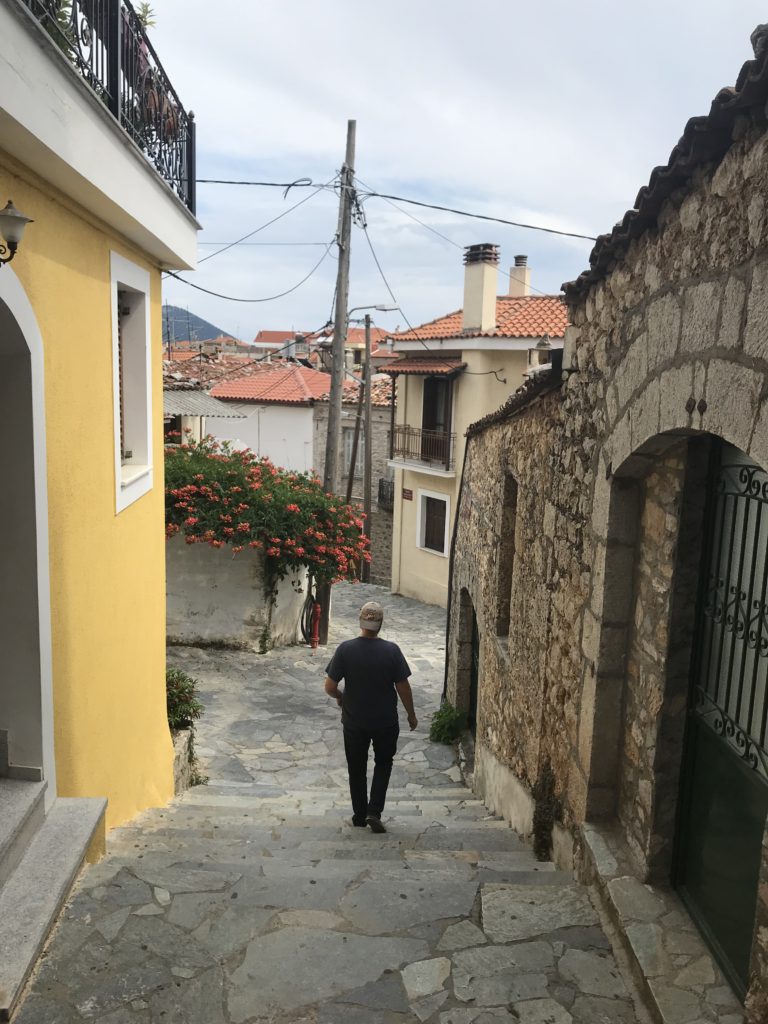
The streets of Arachova. Great for walking, not so much for driving.
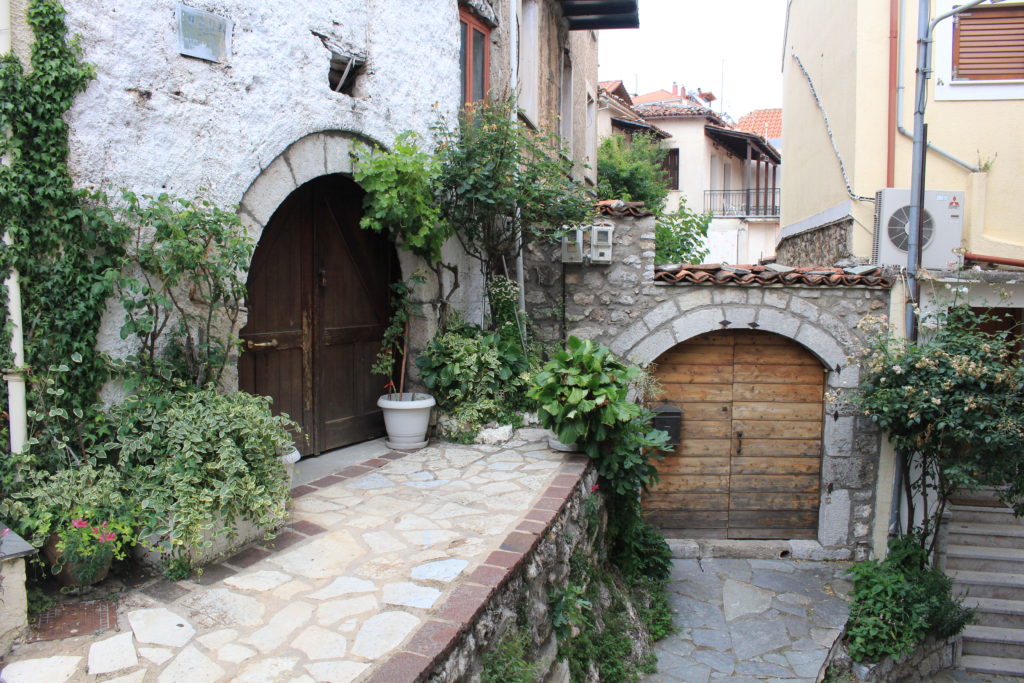
More of adorable Arachova.
The next morning, we made our way bright and early to Delphi, the ancient ruins of the shrine to Apollo where the famous Oracle of Delphi used to deliver her proclamations. We successfully arrived just as the site was opening, and quickly managed to outpace the single tour group to have the site pretty much to ourselves for the next couple of hours. It’s a beautiful site with a more coherent feeling to it (in my opinion) than some of the others we’ve seen because as you proceed through the site you are traversing the path that ancient people would actually walk to apply to ask the Oracle a question. [Editor’s note: It was also easier to envision what the site looked like back in its heyday because the museum contained an excellent rendering of what archeologists believe it was like before it deteriorated, which was pretty amazing. It must’ve been quite a sight to behold back in the day.] Apparently, scientists think that there was a vent in the ground that leaked gases that the Oracle likely breathed to become “high” when she gave her prophecies. Another fun fact is that the Oracle would leave the mountain and “close” during the winter months – my kind of mountain-dwelling lady. [Editor’s note: “Ladies”, actually, since women in the village of Delphi would take turns climbing the mountain to perform the role of oracle.] The path climbs up a steep hill, making it quite a hike but providing absolutely stunning views along the way, down over the lower ruins as well as over to the neighboring mountains. At the very top of the mountain is a stadium where athletic games were held, similar to the Olympic Games but not quite as big (spoiler alert: more on the original Olympic stadium in Olympia soon!).
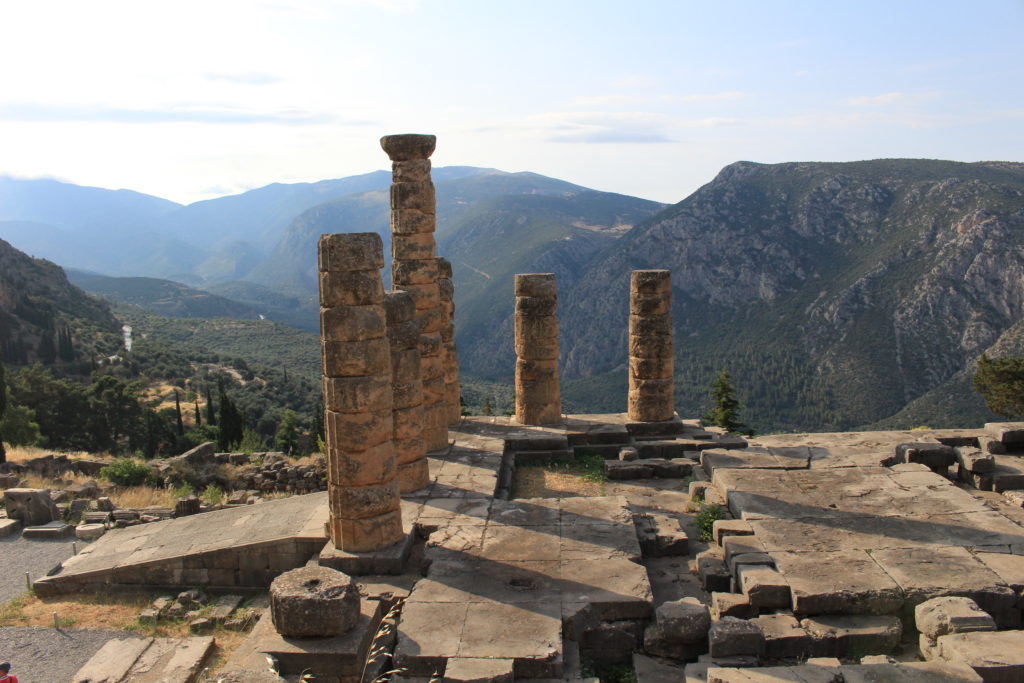
Some of the ruins with a view at Delphi
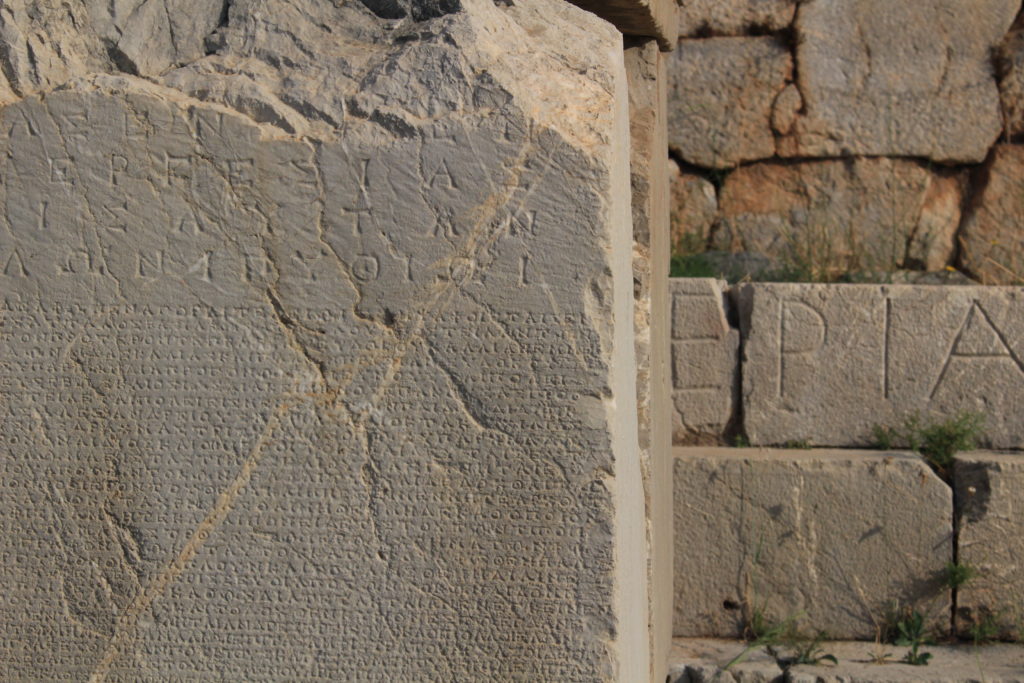
Ancient Greek writing etched into the rocks.
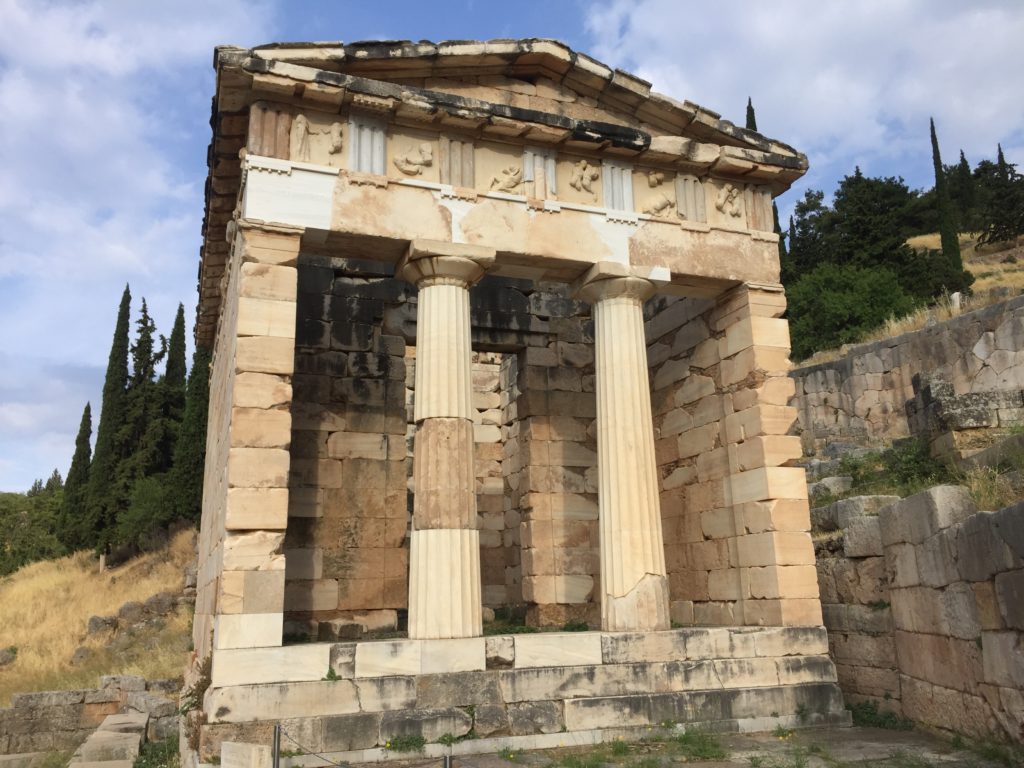
One of the re-constructed buildings at Delphi
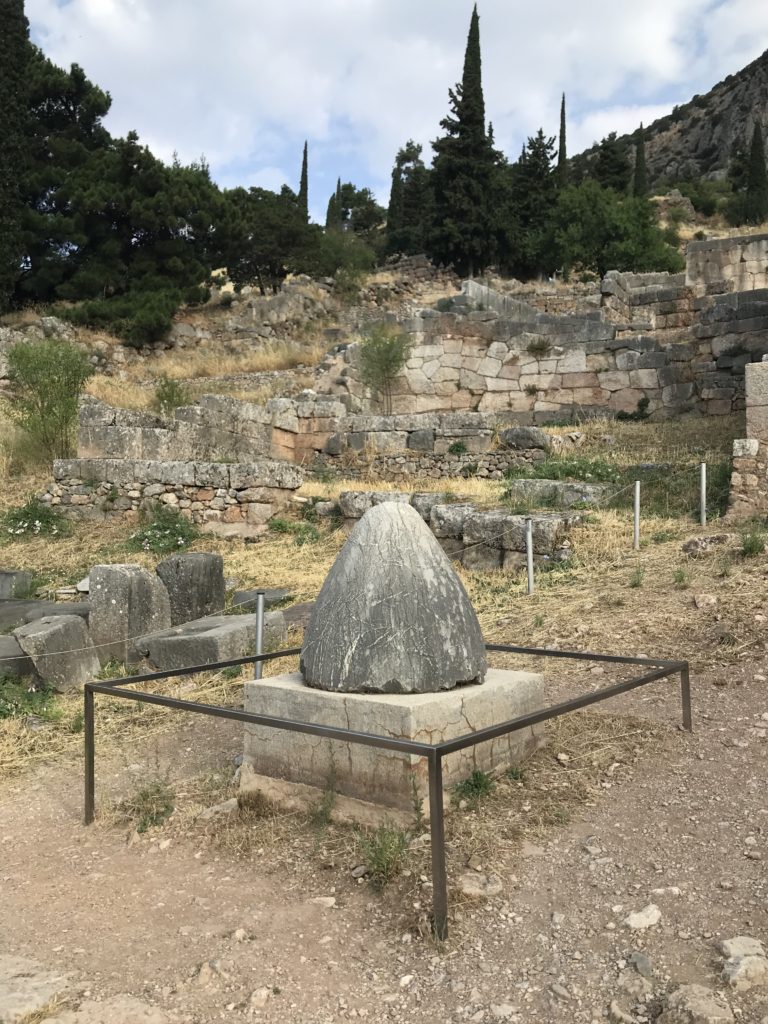
The omphalos, which in addition to being a great word, is supposed to be the “navel” of the world where Zeus’ eagles met.
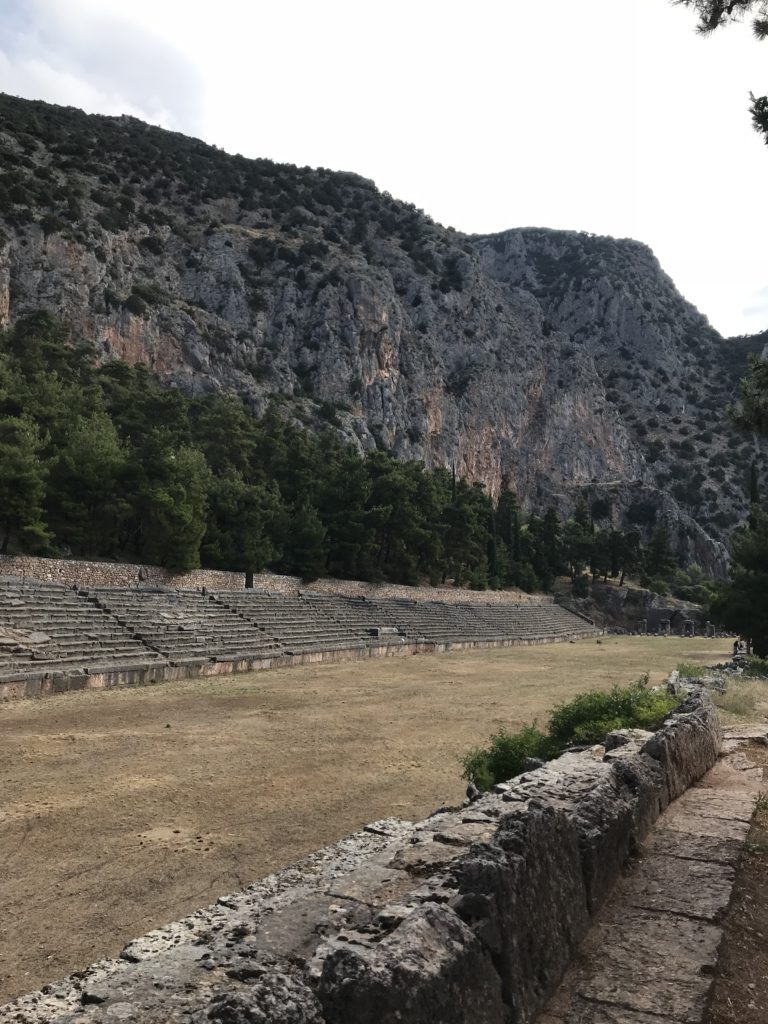
The stadium where athletic games were held
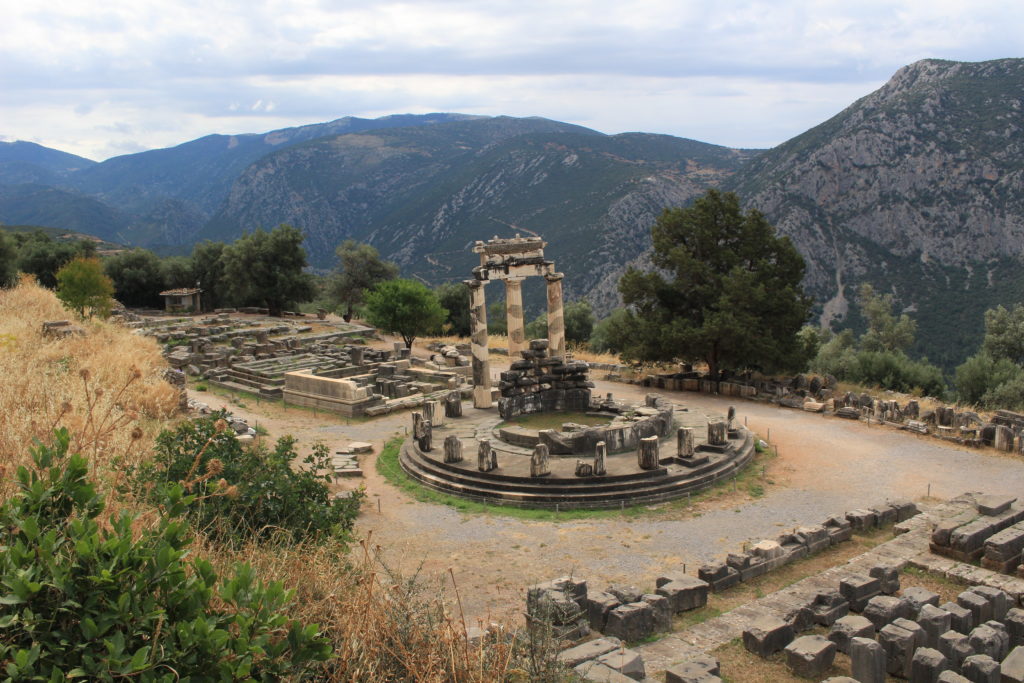
The Temple of Athena
The Delphi site also had a nice museum and a separate temple to Athena lower down on the mountain, so after visiting both of those we headed off to the Peloponnese region for our home base for the next few nights – the adorable seaside city of Nafplion.
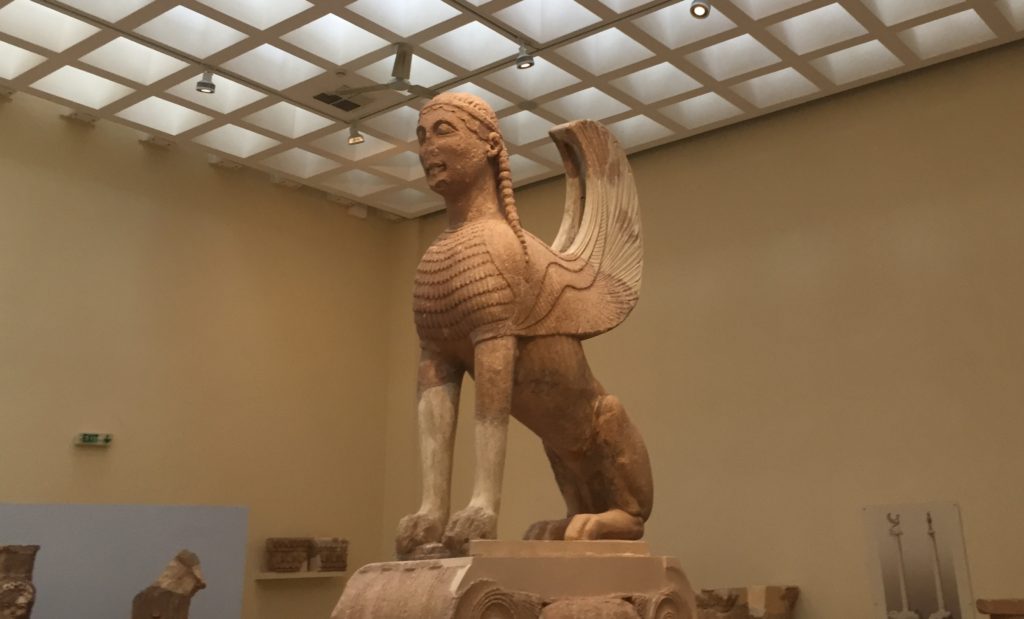
A Sphinx from the Delphi museum
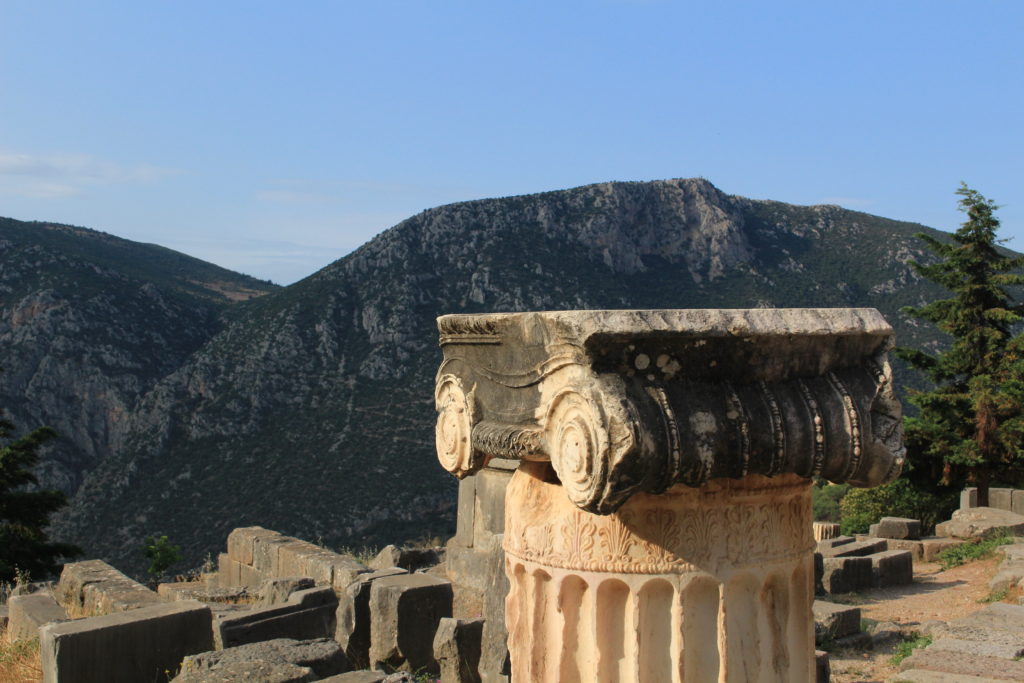
Ruins with a view.
